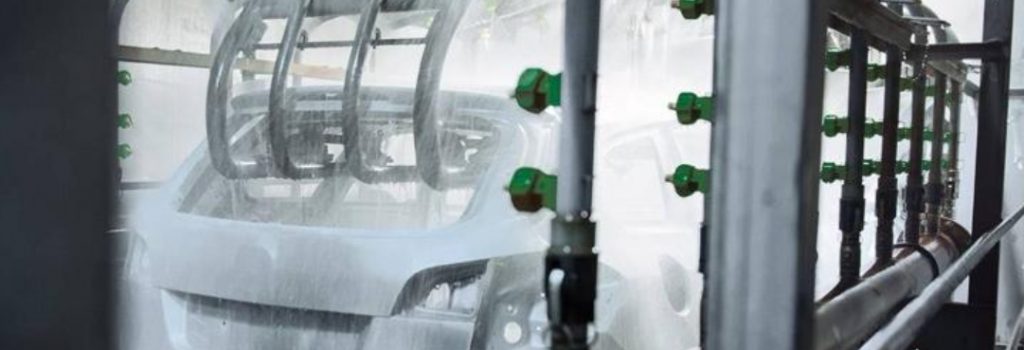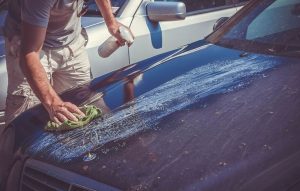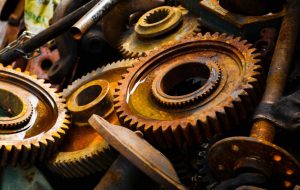
Industrial parts cleaning
How to optimize the bath service life
Quality-oriented industrial parts cleaning is the prerequisite for the success of downstream processes and ensures the proper use of finished products. The specific requirements for cleanliness determine which technical requirements must be created for cleaning. Economic considerations when making an investment should also include ongoing operating costs. Modern equipment for process monitoring and bath care can, for example, extend the service life of baths.
Parts cleaning process with aqueous cleaners
Industrial parts cleaning is often done with water in which washing-active substances are dissolved. These bind the impurities from previous processing steps. The water absorbs the dirt load. When the ability to absorb contaminants is exhausted and the cleaning effect is no longer sufficient, the bath is changed. The period between two bath changes is often determined on the basis of experience. If the period of time selected is too long, there will be a loss of quality in the subsequent process steps. To rule this out with certainty, the bath liquid is often changed too early.
The right time can be determined by clearly defining and monitoring parameters that describe the condition of the pool. This point in time can be greatly delayed by using modern processing technology. The aim is to eject the dirt load and used cleaning agents from the bathroom. A number of material separation processes are available for this purpose. The type of contamination and the cleaning agents used are decisive for the selection of suitable processes.
Industrial cleaning of metals

In most cases, metals are machined using cooling lubricants. An oily film remains on the surfaces on which fine chips and dust accumulate. Other contaminants from which metal must be cleaned can be deep-drawing oils, rolling oils and polishing pastes.
Contamination also includes oxidation products such as rust on ferrous metals or verdigris on copper alloys. The agents for industrial parts cleaning must be tailored to the materials of the components.
Processing techniques
The dirt that is removed from the surfaces during parts cleaning can be roughly divided into solid, non-water-miscible liquid and water-miscible substances. The processing methods used to extend the bath service life are based on the state of aggregation and the miscibility with the cleaning solution. Often used:
- gravity separation,
- coalescence separation,
- centrifugal separation and
- filtration.
If special requirements are placed on the cleanliness of the cleaning solution, more complex processes can also be considered, such as
- microfiltration,
- ultrafiltration,
- reverse osmosis or
- distillation.
The equipment used can be installed directly in the circuit that circulates the cleaning liquid (full-flow processing) or operated in a bypass independently of this circuit (side-stream processing). In order to optimize the processes that serve to extend the bath service life, both variants are often used side by side. The aggregates in the off-line processing can be switched on or off as required.

Gravity and coalescing separation
Free oils and coarse solids that get into the bath when cleaning workpieces can be physically separated due to their different densities. The advantage here is that the process does not affect the composition of the cleaning solution. The separators consist of a container in which the liquid can rest. Light oils float to the surface and can be sucked off or drained from there. In coalescence separators, this process is supported by built-in components on which the oil collects.
Heavy components from the parts cleaning sink to the bottom as sludge. From there they can be removed with screw conveyors. In three-phase separators, both processes take place in parallel.
Extend bath service life through centrifugal separation
Solids or oils can be removed from the cleaning liquid faster in centrifugal separators, also known as separators, than in gravity separators. The principle is also based on the different densities of the phases. The heavy components are flung against the outer wall by fast rotating movements, while the lighter phase collects in the middle. Both phases are collected and drained separately. The shorter processing time is offset by higher acquisition costs.

Filtration for a longer service life
Industrial parts cleaning often produces dirt in the form of suspended matter, which can be retained in filters. In order to avoid clogging of the pores in the filter material, coarse-pored filters are used first, followed by devices with increasingly smaller pores. Due to the good cleaning performance of the filters, significantly longer bath service lives can be achieved. The disadvantage is that the filter material has to be disposed of together with the dirt.
Microfiltration, ultrafiltration and reverse osmosis
Microfiltration, ultrafiltration and reverse osmosis are among the membrane technologies. The nature of the membranes means that the smallest particles, organic molecules or salts can be removed from the cleaning liquid. In the preparation of baths for industrial cleaning, these techniques only play a role if ultra-fine cleaning with very small particle sizes in the residual dirt is required.

Distillation for water recovery
Distillation is mainly used in the treatment of bath liquids for industrial parts cleaning to recover the water. The process is based on the different boiling points of the components. With this technique, substances dissolved in the water can be separated. It helps to extend the bath service life because the concentration of these substances can be limited to a permissible level.
Monitoring of the bath condition
When monitoring the condition of the bath for industrial parts cleaning, the concentration of the cleaning agent and the amount of dirt in the bath are determined regularly. If the value falls below or exceeds the previously specified limit value, measures are required to restore the permissible operating conditions.

This includes the automatic or manual dosing of the cleaning agent or the commissioning of cleaning stages for the bath liquid that are temporarily used in the bypass. In addition to the bath control, checking the residual contamination on the cleaned parts provides information about the condition of the bath and the effectiveness of the process.

